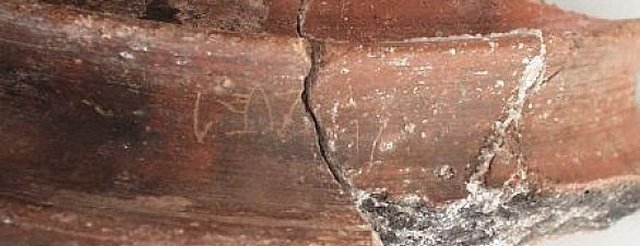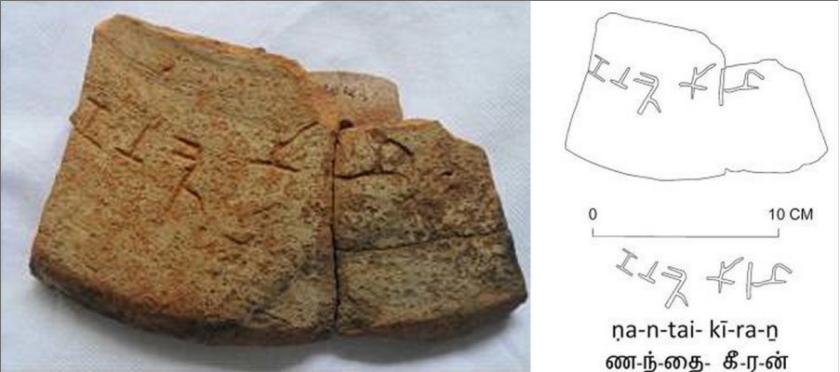A broken storage jar with inscriptions in Tamil Brahmi script (written in a combination of Tamil and the Brahmi script) has been excavated at Quseir-al-Qadim, an ancient port with a Roman settlement on the Red Sea coast of Egypt.
This was discovered few years ago and proves India’s maritime trade with other countries.

Similar inscriptions have also been found in other places.
Same inscription is incised twice on the opposite sides of the jar. The inscription reads paanai oRi, that is, pot (suspended) in a rope net.
This fragmentary vessel was identified as a storage jar made in India.
The Tamil word uRi, which means rope network to suspend pots has the cognate oRi in Parji, a central Dravidian language. Still nearer, Kannada has oTTi, telugu as uTTi probably from an earlier oRRi with the same meaning.
Earlier excavations at this site about 30 years ago yielded two pottery inscriptions in Tamil Brahmi belonging to the first century A.D.
Another Tamil Brahmi pottery inscription of the same period was found in 1995 at Berenike, a big trading center on the Red Sea coast of Egypt.

The above image is of a potsherd found in Oman in 2006. The Tamil-Brahmi script on it can be dated to the first century CE.
Tamil Sangam poets wrote about the flourishing trade from India by sea to Egypt in the Roman Empire.
The Romans imported a varietry of luxury goods such as silk, pearls and spices from the Orient and exchanged wine, fine crockery, glass and fabrics.
